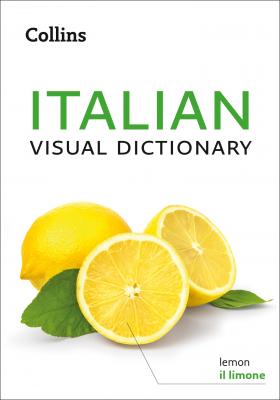Collins Italian Visual Dictionary. Collins Dictionaries
Читать онлайн.| Название | Collins Italian Visual Dictionary |
|---|---|
| Автор произведения | Collins Dictionaries |
| Жанр | Книги для детей: прочее |
| Серия | |
| Издательство | Книги для детей: прочее |
| Год выпуска | 0 |
| isbn | 9780008319960 |
surgeon il chirurgo
Where the feminine form is commonly used, it has been shown after the masculine form of the noun:
vet il veterinario / la veterinaria
3) In general, the masculine form of adjectives only has been shown for vocabulary items and in phrases, for example:
bored annoiato
I’m allergic to… Sono allergico a…
However, in some cases both forms are shown:
I’m married. (man) Sono sposato.
I’m married. (woman) Sono sposata.
Remember that, in Italian, the adjective often changes depending on whether the noun it describes is masculine or feminine. Most masculine adjectives end in “-o” and feminine ones in “-a”, so with a feminine noun “contento” becomes “contenta” and “stanco” becomes “stanca”. Adjectives ending in “-e” like “felice” remain the same whether the noun they describe is masculine or feminine.
The adjective form also changes if you are talking about a person or object in the singular or in the plural. Usually, the plural form of the adjective is formed by adding “-i” (for masculine nouns) or “-e” (for feminine nouns) to the end of the word. Adjectives ending in “-e” form the plural with “-i”:
The girls are bored. Le ragazze sono annoiate.
We are happy. Siamo felici.
FREE AUDIO
We have created a free audio resource to help you learn and practise the Italian words for all of the images shown in this dictionary. The Italian words in each chapter are spoken by native speakers, giving you the opportunity to listen to each word twice and repeat it yourself. Download the audio from the website below to learn all of the vocabulary you need for communicating in Italian.
www.collinsdictionary.com/resources
THE ESSENTIALS | COMUNICAZIONE DI BASE
Whether you’re going to be visiting Italy, or even living there, you’ll want to be able to chat with people and get to know them better. Being able to communicate effectively with acquaintances, friends, family, and colleagues is key to becoming more confident in Italian in a variety of everyday situations.
umbrella
l’ombrello m
1. blue
azzurro
2. red
rosso
3. green
verde
4. white
bianco
5. black
nero
6. yellow
giallo
THE BASICS | ESPRESSIONI ESSENZIALI
Hello.
Ciao.
Hi!
Ciao!
Pleased to meet you.
Piacere.
Good morning/afternoon.
Buongiorno.
Good evening.
Buonasera.
Good night.
Buonanotte.
See you soon.
A presto.
See you tomorrow.
A domani.
See you on Saturday.
A sabato.
Goodbye.
Arrivederci.
Bye!
Ciao!
Have a good day/evening!
Buona giornata / serata!
YOU SHOULD KNOW…
Italian people are quite formal when initially introduced, shaking hands upon meeting and parting. Friends and relatives will often greet each other with a kiss on each cheek. “Buongiorno” is used to greet someone during the day, and “Buonasera” in the late afternoon and evening. “Arrivederci” (or if you want to be very polite “Arrivederla”) is used when taking your leave. The more informal “Ciao” can be used at all times of the day both when greeting someone and saying goodbye.
Yes.
Si.
No.
No.
I don’t know.
Non lo so.
Please.
Per favore.
Yes, please.
Si, grazie.
Thank you.
Grazie.
No, thanks.
No, grazie.
Excuse me.
Mi scusi.
Sorry?
Scusi?
I’m sorry.
Mi dispiace.
OK!
Va bene!
You’re welcome.
Prego.
I don’t understand.
Non capisco.
ABOUT YOU | PARLA DI TE
How old are you?
Quanti anni ha?
When is your birthday?
Quand’è il suo compleanno?
I’m … years old.
Ho…
My birthday is on…
